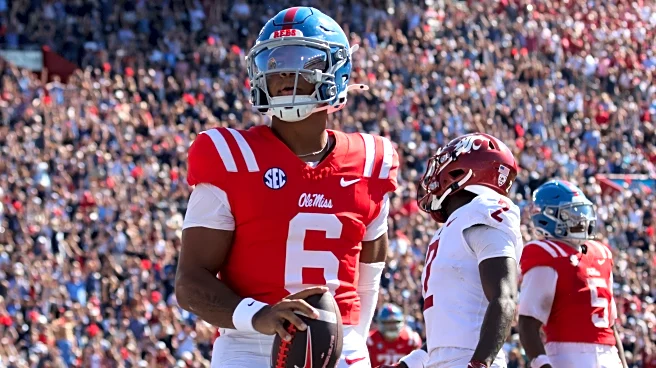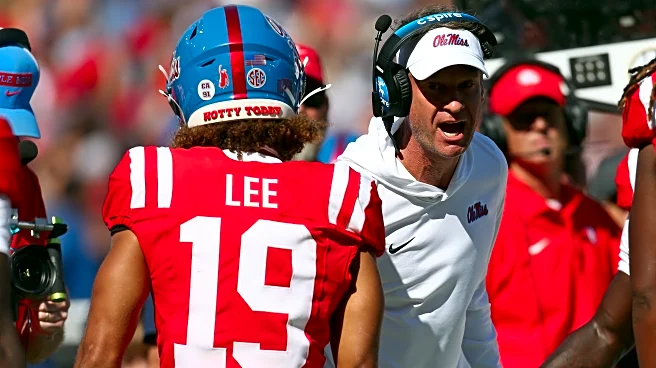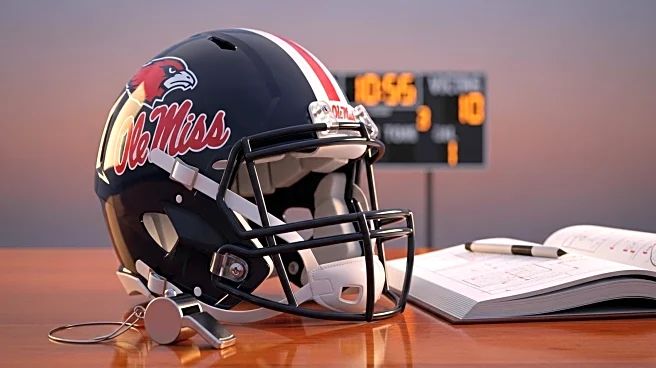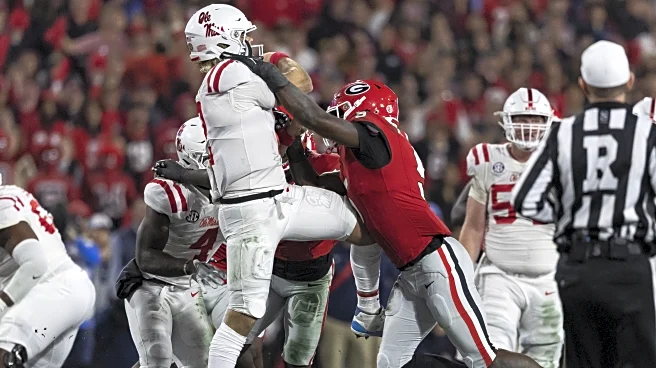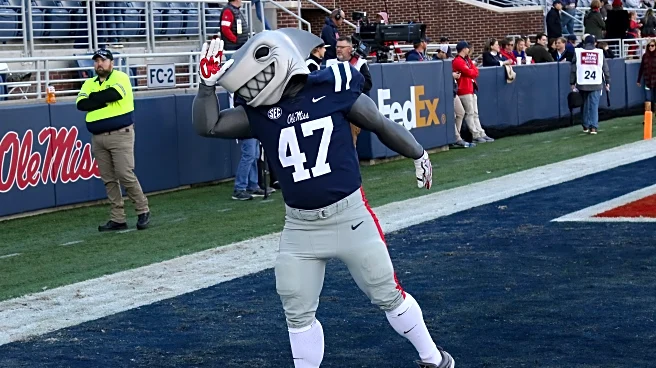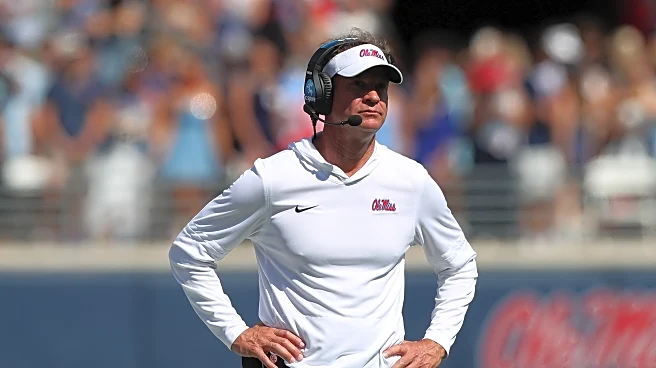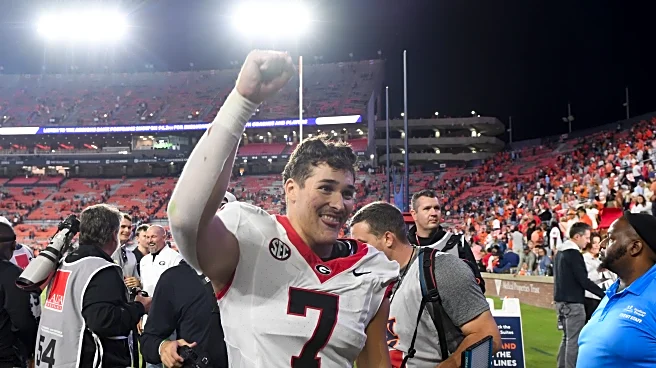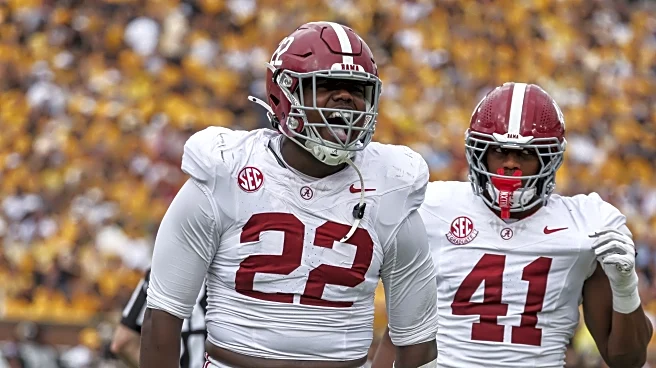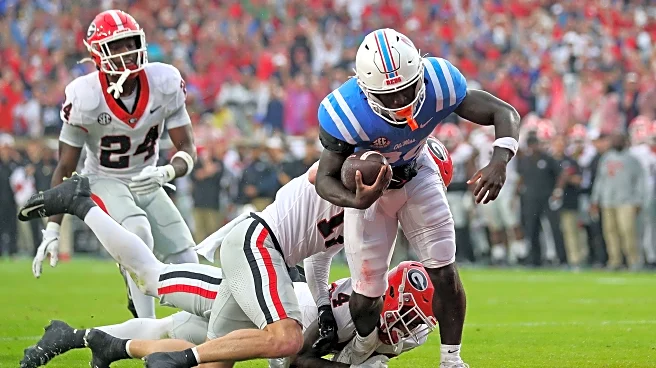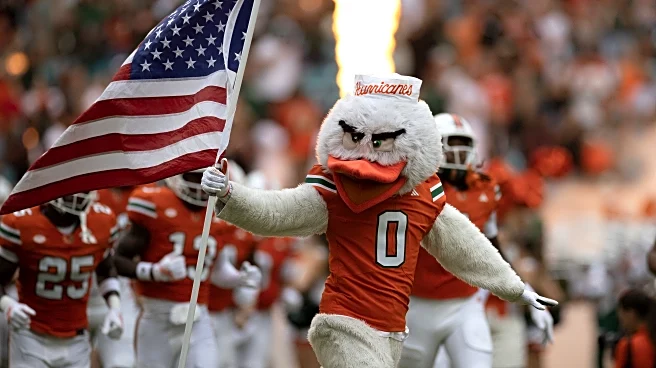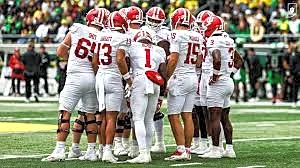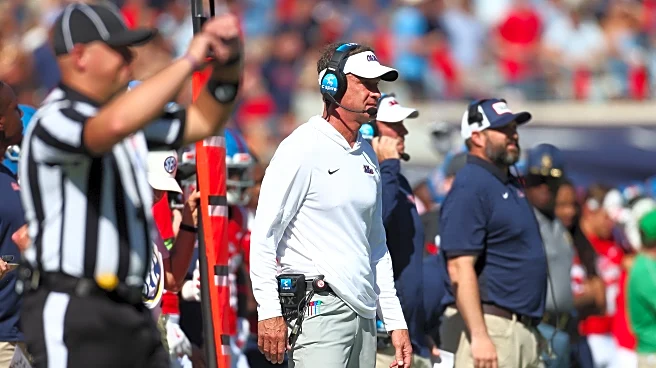One week after a grosser than gross game against Washington State, Ole Miss eases back into things with a trip to a place where they historically stink and lost by half a billion points the last time they had playoff aspirations.
The good news is none of that has anything to do with a game in the Year of Our Lord Two Thousand Twenty Five. As Lane Kiffin* has brainwashed me to repeat, each game and year are different, and what decides Saturday’s game will only be related to Saturday’s game.
*I watched
Kirby Smart’s Monday media time, and he said the same thing. NICK SABAN IS BRAINWASHING ALL OF US.
Saturday also marks Ole Miss beginning the back half of the 2025 schedule. With 6 games to go, they likely need a 4-2 finish to make the playoff, so a loss to Georgia doesn’t mean the end is nigh.
While a win would be ACCEPTABLE, how Ole Miss plays is going to tell us a lot more about who this team is. The LSU game performance is the best indicator we have, but that LSU offense is a whole bunch of WOOF.
Georgia is not the Georgia buzzsaw from a few years ago, but they are a much more complete team than LSU.
What we know
Last Saturday was 10 Butts out of 10 Butts
To use Lane Kiffin’s word, Ole Miss “survived.” Oh, and he was MAD MAD.
I’m not sure the takeaway from the game is anything more than Ole Miss found out they aren’t good enough to coast, but I wanted to formally acknowledge the level of butt we watched for 3 hours.
Defense’s lack of negative plays is officially a thing
I wrote about this prior to the LSU game, and nothing changed in that game or against Washington State. They struggle to get sacks/tackles for loss, yet they’ve generally made life difficult in terms of opponents scoring points (other than Arkansas). Very bizarre!
A few stats of note:
- 95th in sack rate
- 38th in opponent yards/play
- 97th in havoc rate
So how are they keeping points off the board when they aren’t getting offenses off schedule? By doing these few things:
- Limiting explosive plays (24th in opponent points/play)
- Elite pass defense (7th in opponent yards/pass attempt)
- Pretty good in the red zone (25th in opponent scoring percentage)
- Pretty good on 3rd down (27th in opponent conversion percentage)
And according to Parker Fleming’s numbers, they’re top 10 in expected points added per pass* and top 15 in defensive success rate on passing downs.
*Opponents lose 0.231 expected points every time they attempt to pass against Ole Miss.
Now, is this model sustainable over the next 6 games? Part of me wants to say no, but peep the rest of the schedule after Georgia. Do any of those offenses worry you?
[extreme hoarse whisper voice]
No.
The running back food pyramid
It’s not really a pyramid but more of a straight line. Kewan Lacy has 126 of the 158 carries by running backs (79.7 percent), and Logan Diggs is next with 18.
Trinidad Chambliss playing quarterback takes away carries from this group, but it’s clear they’re riding Lacy, and Diggs will get relief carries. Damien Taylor and Shekai Mills-Knight will not receive any meaningful carries (barring injuries).
Receiver targets
This is subject to change when defenses decide they’re tired of getting beat by one guy (more on that is a minute!). But here are all targets for eligible receivers (WR/TE/RB):
- Tre Wallace III – 34
- Deuce Alexander – 29
- Dae’Quan Wright – 25
- De’Zhaun Stribling – 25
- Cayden Lee – 24
- Kewan Lacy – 17
- Winston Watkins – 12
- Caleb Odom – 8
- Izaiah Hartrup – 2
- Trace Bruckler – 2
- Logan Diggs – 2
- Damien Taylor – 1
Of note, after getting 10 targets in the Arkansas game, Wallace had 6 (Tulane), 3 (LSU), and 0 (Wazzu) targets. It feels like an effort from LSU and Wazzu to make someone else beat them, which we could see again with Georgia.
The good news for Ole Miss is the attempts at distribution are not predominantly invested in one or two guys. It’s very much a spread the wealth based on matchups situation.
That’s right, you heard it here first: Lane Kiffin, THE SOCIALIST.
What we kinda know
Trinidad Chambliss at quarterback until he’s not
Kiffin repeatedly said when Austin Simmons is 100 percent healthy, he’s the starting quarterback. As Simmons slowly became more healthy (who knows if he will ever be 100 percent), and Chambliss went on his tear, Kiffin settled into a “we have two great quarterbacks, and either could play” talking point to hopefully make opponents prepare for both.
Chambliss has given Kiffin zero reasons to not start him, especially with Simmons’ performances against Georgia State and Kentucky. Overall, they were mostly fine, but nothing to require he get his job back.
Kiffin loves being anything but definitive (and rightfully so), but even if Chambliss is the guy for the rest of the year, Ole Miss will likely need Simmons at some point if Chambliss falters or has to miss time with an injury.
What we don’t know
The complete profile of this team
As mentioned above, we’ll know a lot more after Saturday. Offensively, things are trending well, but what does the defense look like against an offense that has the ability to hurt them in multiple ways?
In general, will we find out it’s a bit of a 2023 situation, and Ole Miss is outclassed with talent? Or do we find out Ole Miss stayed on the same competitive plane as Georgia after last year?
That doesn’t mean Ole Miss wins but has a chance to win, which would be a great sign for the remaining 5 regular season games.
